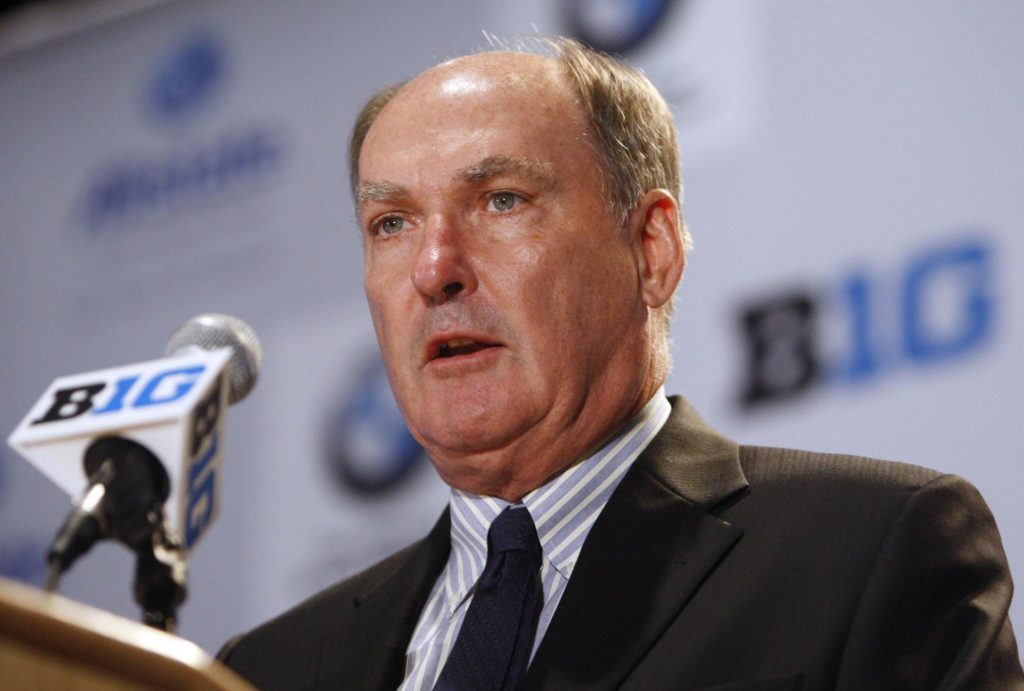NCAA transfer rule has no teeth: It passes the buck again

On June 13th the NCAA passed what many believed was monumental legislation. A chance to to finally give the “student athletes” some of the power and freedom of mobility that nearly all of the millionaire head coaches possess.
It was a chance for players to change schools without the player’s current institution having the ability to effectively block certain schools from the transfer list.
Up until this point for a player to transfer in Division 1 FBS Football, the player must notify his current institution that he would like to transfer and then wait for the list of “approved” schools that could contact him. This ruling seemed to abolish the nonsense.
But did it actually do anything?
After reading the NCAA ruling from their own website, the ability for schools to block player movement was eliminated.
Great move by the @NCAA to help eliminate vindictive coaches: New transfer rule eliminates permission-to-contact process https://t.co/j7bZ1mSPo5
— Bobby Carpenter (@Bcarp3) June 13, 2018
The only problem is there is one glaring omission from the NCAA’s edict; it doesn’t eliminate conferences from continuing to block intra-conference transfers. So the long and short of it is players can transfer outside of their respective conference without penalty (outside of the mandatory 1 year absence from play for undergraduates), but inside the conference the schools still rule.
The amazing part of the entire process is that it has been over a week since the news broke and not a single Power 5 conference has commented on the rule change. Are they for it? Are they against it? No one really knows, because no conference wants to be the first to break rank and allow graduated transfers to leave and play immediately inside their conference without any regard for their former school… but no one wants to look like the bad guy either.
It’s the crux of the entire argument. NCAA Commissioner Mark Emmert didn’t want to push through real change, so he threw this nonsense out to placate everyone. Bundle it up with redshirt players getting limited game time and it’s a public relations win.
But it’s not.
Big Ten Commissioner Jim Delany where are you? SEC Commissioner Greg Sankey why haven’t you taken the lead?
That’s right, all the commissioners are cowards and would much rather be reactive and hide in their expensive offices than try and promote real change that helps give players a chance to live their dream. They would rather sit around and collect their nice paychecks and pensions while guarding the golden goose and holding on to an antiquated system that penalizes players and enriches coaches, athletic directors and most of all… the commissioners.
Until one of the Power 5 conferences actually tries to level the playing field for coaches and players, we are going to hear more of this Nick Saban nonsense where he cries that his hands are tied by conference rules and speaks of transfers as if it will lead to an NFL free agency model.
Get a grip Nick and the commissioners should too.

Excellent points, Bobby. The NCAA, Power 5 conferences, and their member institutions continue to prove no one in American sports is as parasitic as those who run the day-to-day business of NCAA Division 1-A football. (Sorry, I refuse to call it FBS.)
I would like to see the rules state that a player may transfer once, to any school he chooses, while he is an undergrad with available eligibility. Early graduates (graduate transfers) would be able to exercise a second transfer option to any school he chooses. While I think it would be rare, a player could play at three different schools should circumstances/desires necessitate such a scenario. I’m thinking about things like coaching changes, issues with playing time, NCAA violations/sanctions not involving said player, or acceptance into a post-graduate program.
Not every player belongs in every program. Assuming a player is able to fulfill his academic obligations (no small feat, as you very well know) and stay out of legal/NCAA trouble, I see no reason to restrict a player’s movement. I think it’s the least the NCAA could do for its major college football participants, at least until a realistic way to financially compensate these athletes comes along.